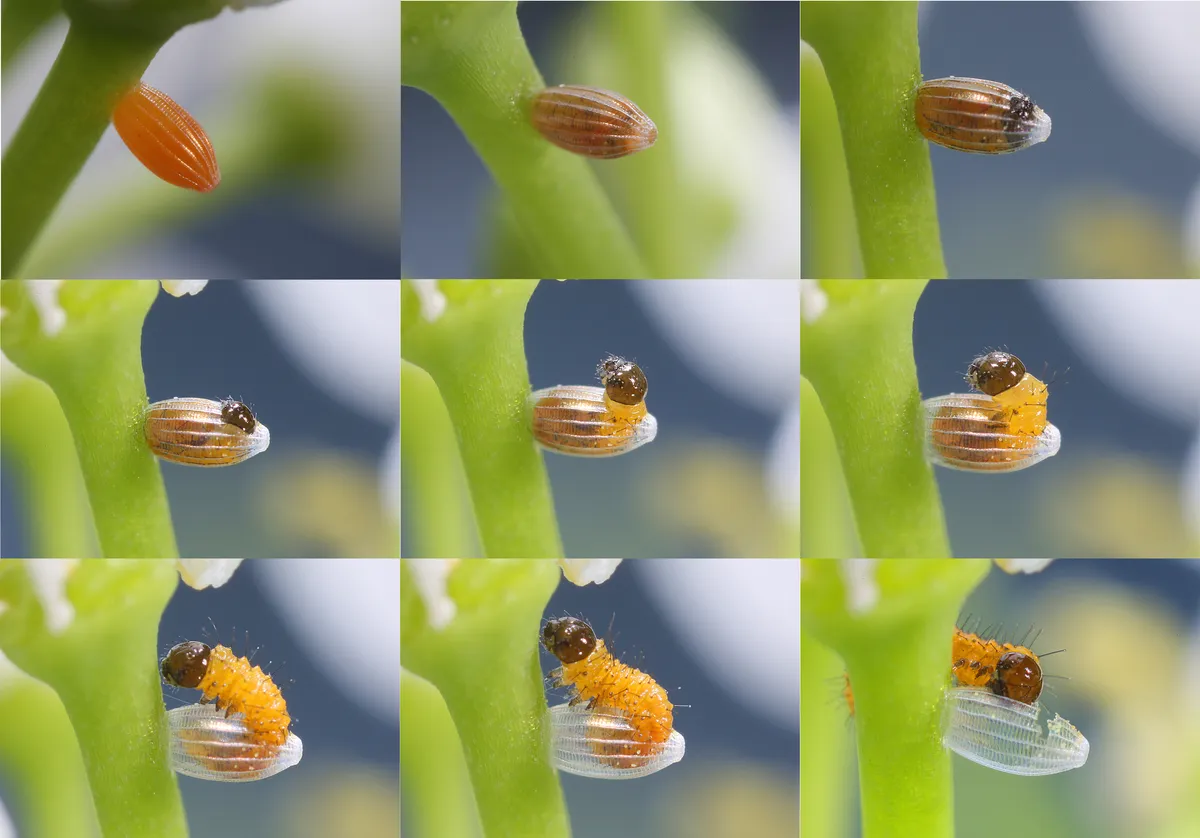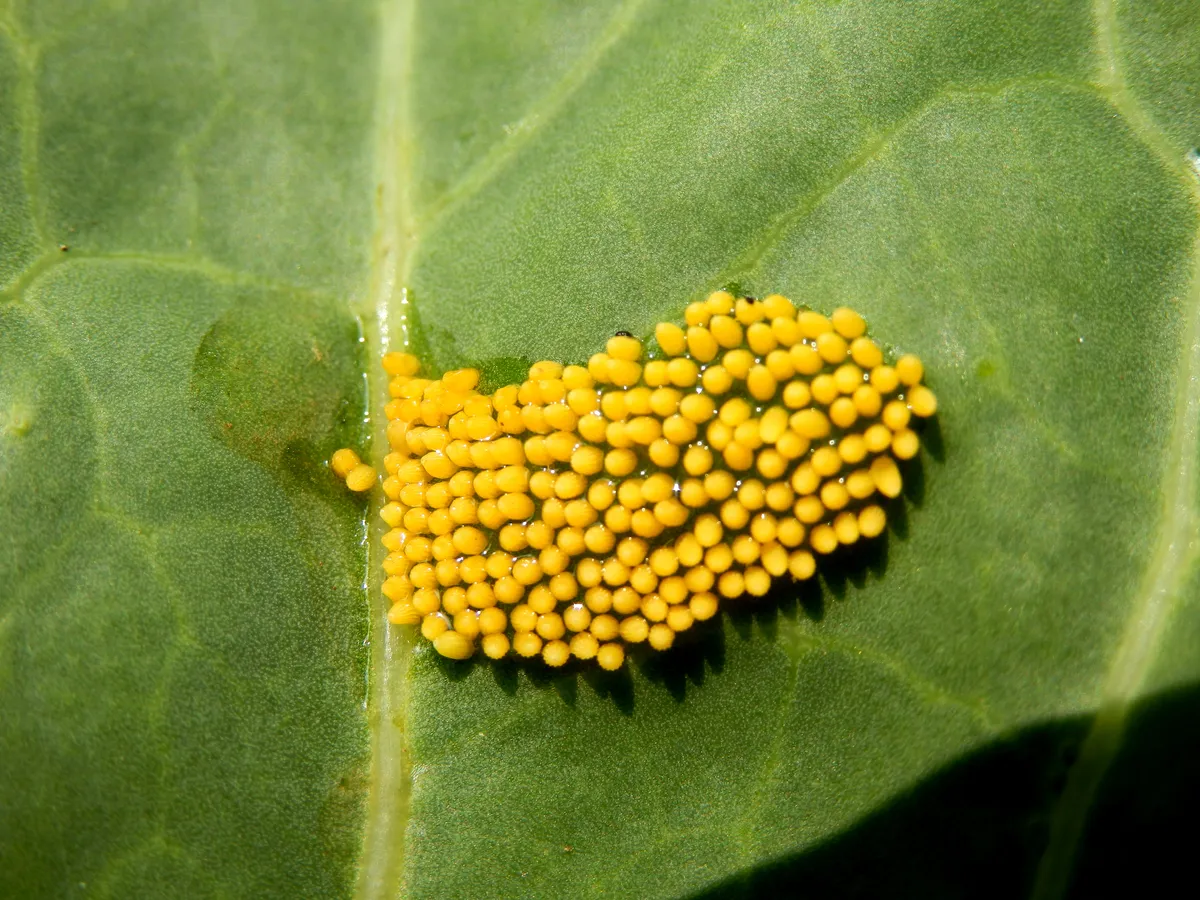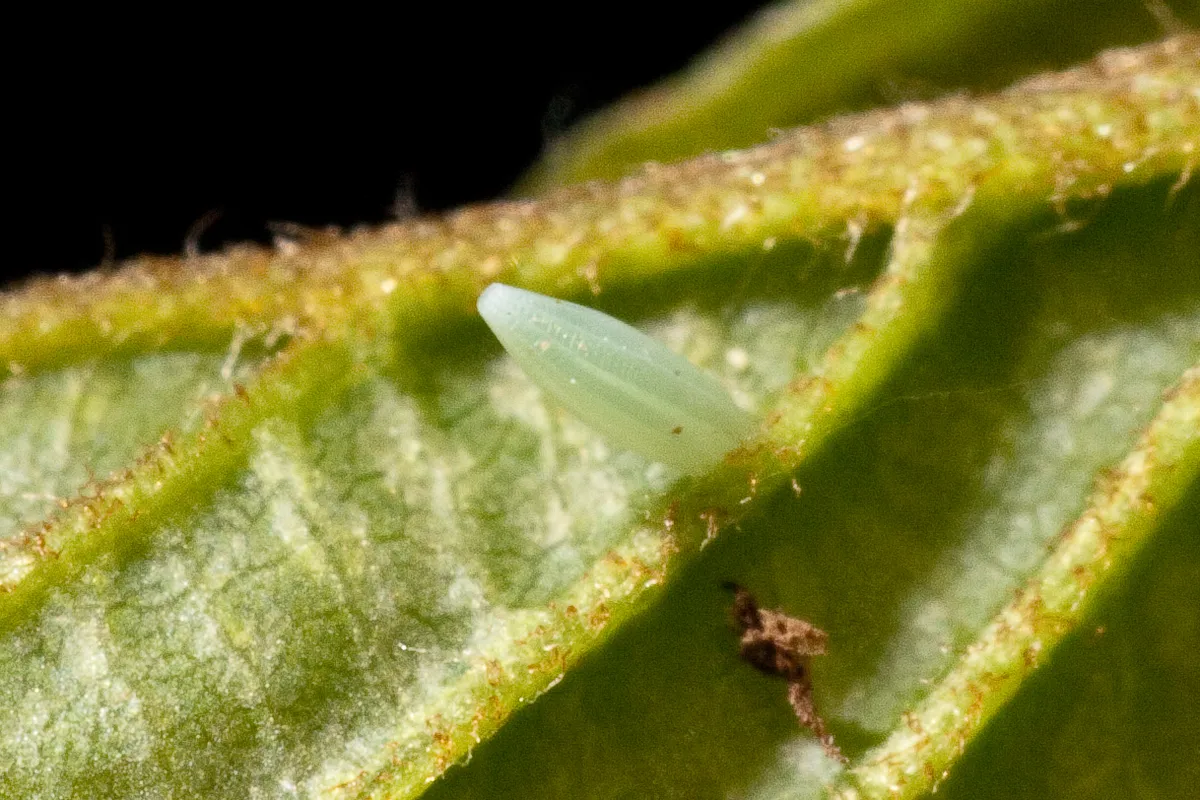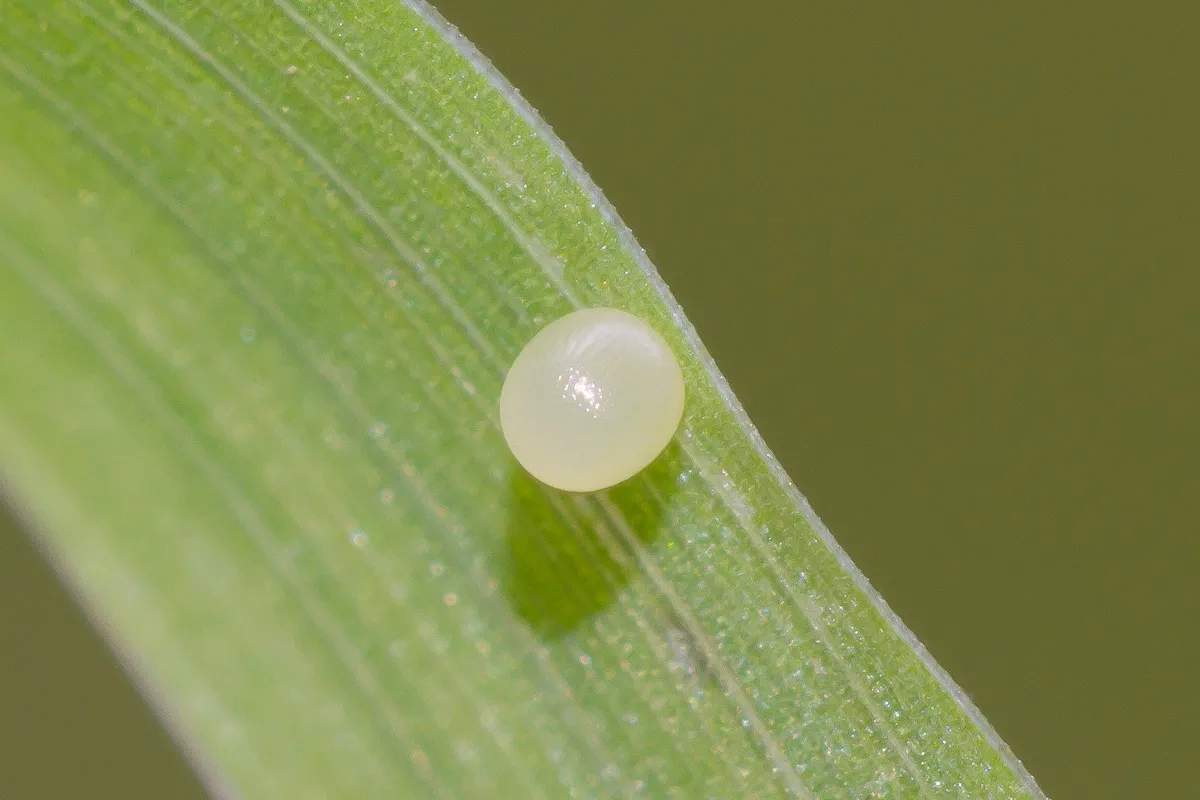1
Orange-tip (pictured above)
Description: Greenish-white when first laid, but turn bright orange in a few days.
Where: Eggs are laid beneath the calyx or on a stalk of cuckooflower, garlic mustard. In gardens, the eggs are often found on dame’s violet or honesty.
Hatching period: 1 or 2 weeks.
Best time: End of April – late June.

2
Large white

Description: The yellow skittle-shaped eggs are laid directly on the food plant (rather than on top of other eggs) in batches of 40 to 100 eggs, resulting in an organised egg mass.
Where: the underside of leaves of brassicas, nasturtiums and wild mignotte.
Hatching period: 1 or 2 weeks.
Best time: Early May to mid-September.
3
Brimstone

Description: Although several eggs may be found together, this is either the result of different females, or the same female revisiting the same spot. Newly-laid eggs are pale green, turning yellow and eventually grey as the larva develops inside.
Hatching period: 1 or 2 weeks.
Where: Laid singly on the undersides of the youngest buckthorn leaves at all heights.
Best time: Early May end of June.
4
Speckled wood

Description: The spherical eggs are very light green in colour are laid singly, sometimes in pairs, on the underside of a leaf of the foodplant.
Hatching period: 1 or 3 weeks, depending on temperature.
Where: wide range of grasses including false brome, cock’s-foot and Yorkshire fog, growing in warm sheltered places.
Best time: Mid-April end of August.
5
Small copper

Description: resembling a tiny golf ball, the eggs are laid singly, usually on the underside of a leaf. The egg is white when first laid, gradually become grey.
Hatching period: 1 or 2 weeks.
Where: either near the leaf midrib or and sheep sorrel, and occasionally dock leaves.
Best time: Early May to end of August.
